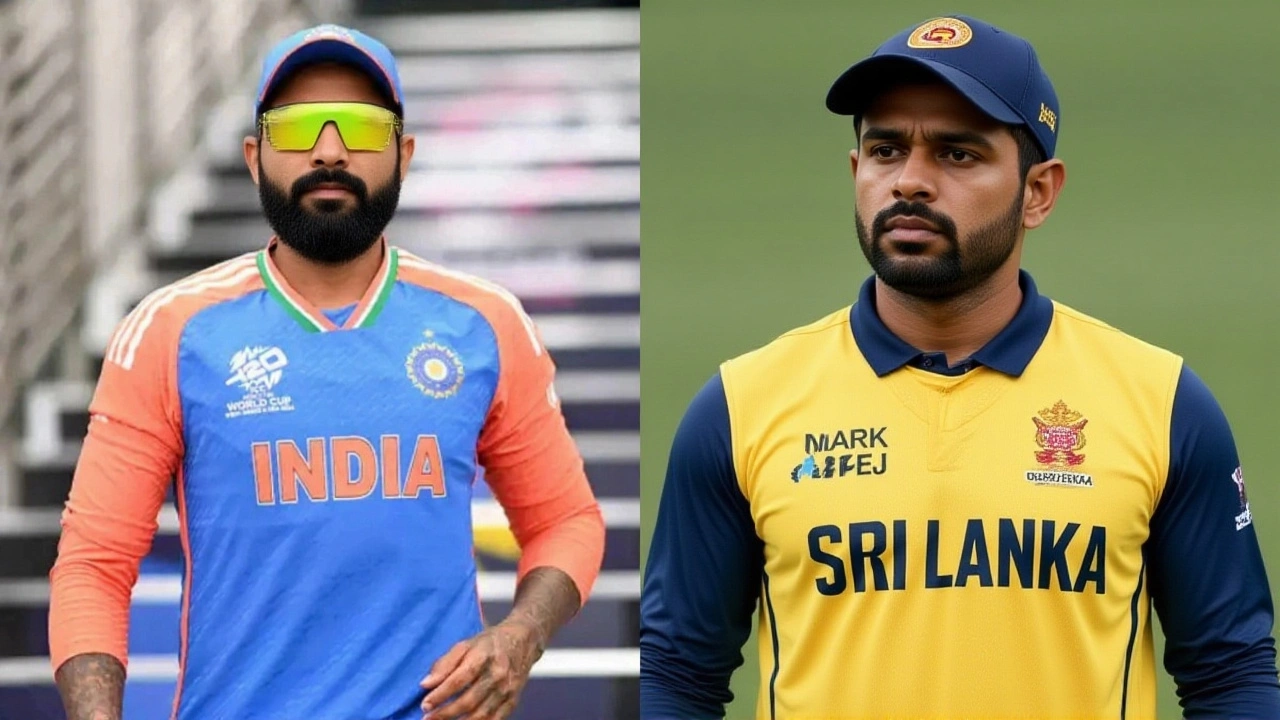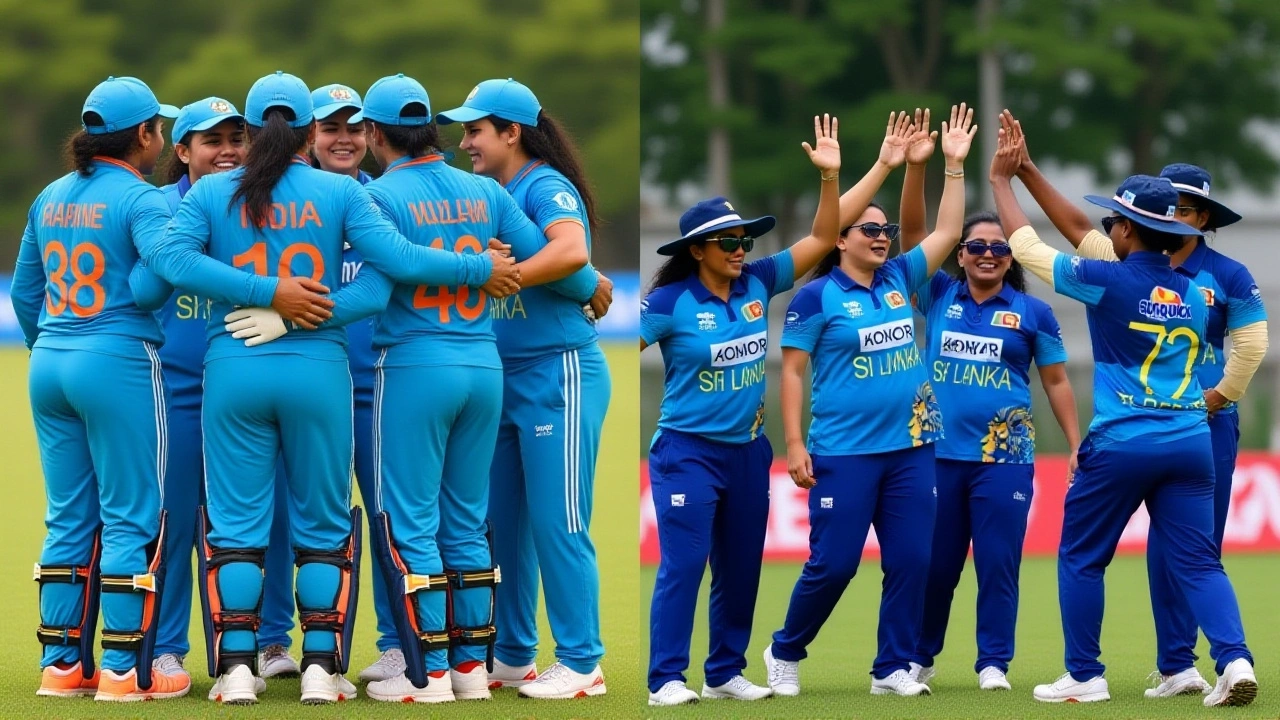India Women didn’t just win the 2025 Sri Lanka Women’s Tri-Nation Series—they announced themselves as World Cup favorites. On Sunday, May 11, 2025, at the R. Premadasa Stadium in Colombo, the India Women posted a commanding 342/7 in 50 overs and then bowled out Sri Lanka Women for just 245 in 48.2 overs, sealing a 97-run victory that capped off a dominant campaign. The win wasn’t just about numbers; it was a statement. Smriti Mandhana, playing with fire in her eyes, smashed her first ODI century on Sri Lankan soil—116 off 101 balls—and Sneh Rana turned the game with a spell of 4 for 38. The crowd fell silent when Rana dismissed Anushka Sanjeewani with just 12 balls left, the required run rate hitting 49.00. It wasn’t a chase. It was a coronation.
A Batting Masterclass from the Top Order
India’s innings was a textbook example of controlled aggression. After winning the toss and electing to bat, they lost openers early but never blinked. Smriti Mandhana was sublime—13 fours, two sixes, and a calmness that belied the pressure of a final. Her 101-ball knock came at a strike rate of 114.85, and she anchored the innings while Harleen Deol (47 off 56) provided the perfect foil. Jemimah Rodrigues, who had already scored 123 against South Africa just days earlier, didn’t need to go big this time. The middle order, led by Richa Ghosh (31 off 34) and debutant Kranti Goud (12 off 18), kept the momentum alive. By the 45th over, India were well past 300, and the scoreboard looked less like a target and more like a warning.
Where Sri Lanka Crumbled
Sri Lanka’s reply began with promise. Chamari Athapaththu, their talisman, looked in control, scoring 51 off 66 balls with the grace of a veteran. Nilakshika Silva added 48, and for a while, it seemed like the home side might pull off a miracle. But the turning point came in the 33rd over. With Sri Lanka at 164/3, the pressure began to mount. Sneh Rana was the architect of the collapse—her variations, her accuracy, her ability to strangle the strike—she made the Sri Lankan batters look out of sorts. Amanjot Kaur (3/54) added spice with her medium pace, and Pratika Rawal, who didn’t concede a single run in her 5-over spell, became the quiet hero. The bowling figures tell the story: 48.2 overs, 245 runs, 10 wickets. That’s not just good bowling—it’s clinical.
A Tournament That Mattered
This wasn’t just a friendly series. The 2025 Sri Lanka Women's Tri-Nation Series, also known as the Servo Cup, was the final warm-up for the 2025 Women's Cricket World Cup. And India didn’t just participate—they dominated. They beat South Africa by 23 runs in the penultimate match, then lost a nail-biter to Sri Lanka by three wickets on May 4, a result that showed they weren’t invincible. But in the final, they were. South Africa’s Chloe Tryon had made headlines with her first ODI hat-trick in the series, and Sri Lanka’s fight was commendable. But India? They were the only team to win all three of their matches against the other two. That’s not luck. That’s preparation.

What This Means for the World Cup
India’s performance in Colombo didn’t just win a trophy—it rewrote the narrative. Before this series, Australia and England were the favorites. Now? India’s batting depth, their spin attack led by Rana and Radha Yadav, and their fielding intensity have made them a legitimate threat. Mandhana’s century in Sri Lanka is symbolic. She’s no longer just a star; she’s a leader who delivers under pressure. And then there’s Kranti Goud, making her ODI debut in the final and holding her nerve. That’s the sign of a team building for the future, not just the present.
The BCCI’s post-match statement was brief but telling: “They were simply a class apart, outplaying Sri Lanka Women in all departments.” ESPN’s Madushka Balasuriya put it even better: “The best team across the tournament came through as champions.” And he’s right. This wasn’t a fluke. It was a culmination of months of training, tactical discipline, and mental toughness.
Behind the Numbers
- India scored 342/7 in 50 overs—highest total of the series
- Sneh Rana’s 4/38 was the best bowling figures in a final for India Women since 2022
- Smriti Mandhana’s 116 was her 15th ODI century and first against Sri Lanka
- Sri Lanka’s required run rate of 49.00 with 12 balls left was the highest ever in a women’s ODI final
- India won 3 of their 4 matches in the series, losing only to Sri Lanka by 3 wickets

What’s Next?
The next stop is the 2025 Women's Cricket World Cup, set to begin in October in India. The squad will now be finalized, and selectors will be weighing whether to keep Kranti Goud in the XI or bring in experienced hands like Shafali Verma. But one thing is clear: India’s confidence is sky-high. They’ve beaten the top teams in the region. They’ve handled pressure. They’ve won under lights in Colombo. Now, they’re ready for the world.
Frequently Asked Questions
How did India’s performance in this series compare to their previous World Cup campaigns?
India’s dominance in the 2025 Tri-Nation Series surpasses their 2022 World Cup campaign, where they lost in the semifinals. This time, they won all key matches against top-tier opponents, with Smriti Mandhana and Sneh Rana delivering match-winning performances under pressure—something they struggled with in Australia in 2022. The team’s depth, particularly in spin bowling and middle-order stability, has improved significantly.
Why was Sneh Rana’s bowling so effective in the final?
Rana’s success came from her ability to mix flight, pace, and subtle variations. She bowled 9.2 overs without a single wide or no-ball, consistently hitting the corridor outside off-stump. Her off-spin trapped batters in the crease, and her changes of pace disrupted timing. Sri Lanka’s batters, used to faster spinners, were caught off guard. Her 4/38 was the most economical four-wicket haul in a women’s ODI final since 2019.
What role did debutant Kranti Goud play in the final?
Kranti Goud, a 21-year-old all-rounder from Punjab, came in at No. 7 and scored 12 off 18 balls with a boundary and a six. More importantly, she held her nerve in the final overs when Sri Lanka were still in the hunt. Her presence in the lower middle order gives India flexibility, and her ability to bowl medium pace adds another option to the attack. Her debut in a high-stakes final signals India’s willingness to trust youth.
How did Sri Lanka’s performance in the series reflect their World Cup readiness?
Sri Lanka showed grit, particularly with Chamari Athapaththu’s leadership and Nilakshika Silva’s consistency. But their bowling attack lacked penetration—only Sugandika Kumari and Dewmi Vihanga took multiple wickets, and their spinners were exploited by India’s aggressive middle order. While they’ll enter the World Cup as underdogs, their performance here proves they’re improving, especially in chasing totals.
Was this the most dominant performance by India Women in a tri-series?
Yes. In terms of net run rate, win margin, and consistency across all matches, this is India’s most dominant tri-series win since the 2017 Women’s Asia Cup. They won by 23 runs against South Africa, lost by 3 wickets to Sri Lanka, then won the final by 97 runs—showing resilience and the ability to bounce back. Their batting averaged 298 per innings, the highest in any tri-series since 2020.
What’s the significance of Smriti Mandhana’s century in Sri Lanka?
Mandhana had never scored a century in Sri Lanka before this match, despite playing there since 2017. Her 116 in Colombo breaks a personal barrier and proves she can perform under pressure in Asian conditions—critical for the World Cup, where India will face Australia and England on subcontinental pitches. It’s also her first ODI hundred since 2023, signaling a return to peak form.

